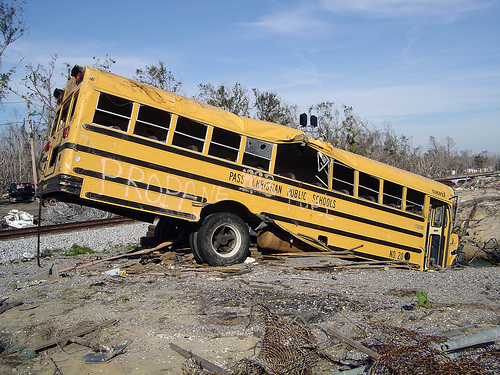
Image Credit:
In my RHE 309K, Rhetoric of Tragedy, I often ask students to analyze or otherwise engage with images. It seems appropriate to the content, since images often play a large part in how violent or disastrous events are defined, and it creates less reading, which my students seem to like. With my Using Images for Invention lesson plan, I hoped that an engagement with images related to their tragedies would expose some of the students’ own assumptions and feelings in relation to the event, as well as make them aware of affected parties that they might not have otherwise considered. However, I now think that the assignment was both too rushed and too structured. With some modifications, I think it could be more effective.
In the interest of allowing students to explore the various points of view, I would in the future give students more time and allow them to compile a collection of images on their blogs. I would also give the assignment more weight, given the increased time investment. The lesson as I had originally conceived of it was in-class activity, but students seemed rushed and probably used whatever image they found first, regardless of their level of interest or engagement. Giving students time to collect images (probably some time in class, but mostly out of class) might help them engage more with what they find, thereby making the exercise more helpful overall. I have also considered following this activity with mind-mapping; students have enjoyed mind-mapping in class before and seem to find it particularly useful for invention, and the images may help improve the quality of their maps.
I think this exercise could also provide some preparation for the image production students complete as a part of their final major assignment. Right now, the image production assignment is fairly open, but I provide students with in-class instruction on Animoto so that everyone has at least one means of producing a visual argument with which they feel comfortable. Compiling a collection of image could segue into this more significant assignment fairly easily, particularly since the guiding questions ask students to identify what is missing from the representations they find. Identifying what the images lack (individually and as a group) could better prepare students to intervene in a broader visual conversation.

